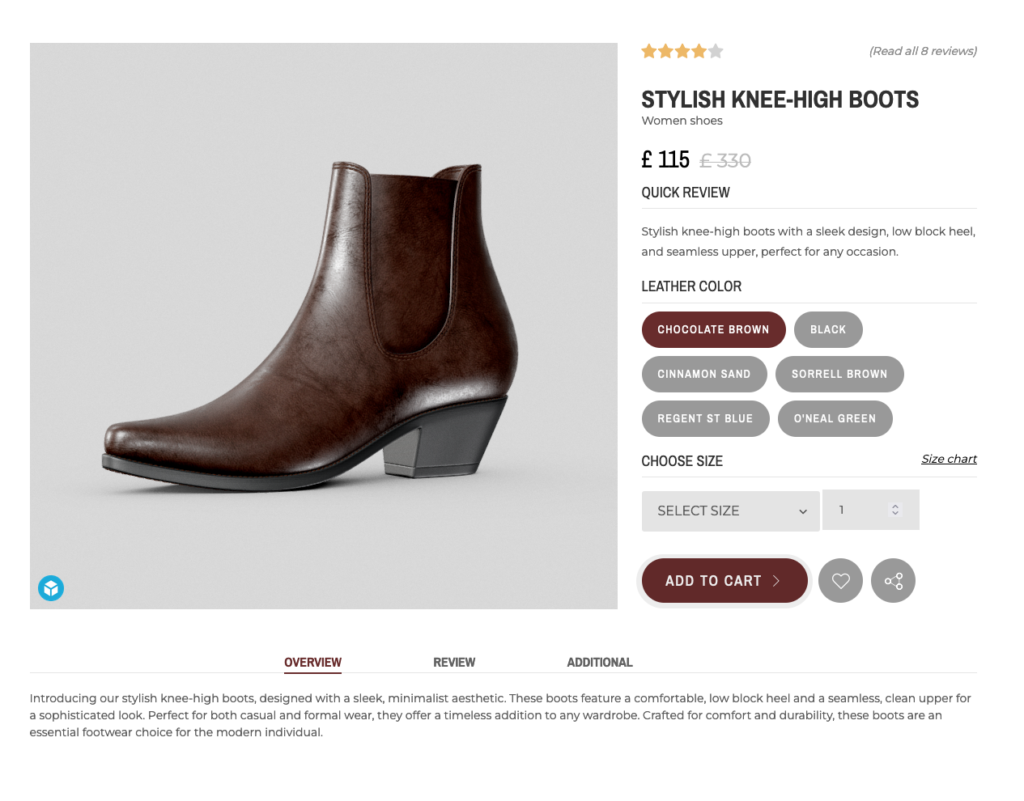In the rapidly changing world of ecommerce and digital retail the ability to visually show products in a convincing interactive way has transformed the game. For furniture manufacturers, the appearance, fit, and feel of the furniture is the primary factor in the decision to purchase. The 3D configurator for products is an innovative tool which has revolutionized the way furniture shoppers shop online and in stores.
The rise of 3D Product Configurators
A 3D Product Configurator is an electronic product that lets customers view and interact in three dimensions. A 3D product configurator permits users to move the product, zoom in, and alter products live, unlike static images. This technology has become increasingly used in the furniture business which provides an exciting and exciting shopping experience.

Enhancing Customer Experience by Providing Online Furniture Configurators
The better customer experience furniture configurators offer is among the greatest benefits. Customers can customize the colors, finishes and furnishings, as well as see the furniture from different angles. Additionally, they can visualize how their new furniture would be able to fit into their home. This interactive shopping experience helps to make the shopping experience more enjoyable, and more educated.
The 3D configurator of Virtenzo, as an instance, lets customers completely alter their shopping experience, by offering breathtaking 3D-like details and customizable options. This type of interaction can bridge the gap between physical and online shopping by creating confidence for customers in their shopping choices.
Interactive 3D Furniture Configurators for Furniture: Promoting Online Sales
3D product configurators have significant effects on sales online. Interactive 3D visualizations have been shown to increase conversion rates as well as reduce returns. People are more likely to to purchase the product if they have a adequate knowledge of it.
A 3D furniture configurator also allows retailers to showcase a vast range of product variations without the need to produce and photograph each one. This helps reduce the costs of presentation and allows for a more vast selection of choices that can be tailored to different customer preferences.
Immersive 3D configurators: The future of furniture shopping
As technology continues to develop in the field of furniture, the future of shopping is sure to be shaped by immersive 3D configurators. The tools are expected to get even more advanced, adding features such as virtual reality as well as augmented reality to enhance the shopping experience.
Customers can make use of AR or VR on their phones to see a product in the real world. These innovations can make shopping more engaging and personal.
Implementing 3D Product Configurators: A Guide for Furniture Makers
Implementing the use of a 3D Product Configurator can be a bit daunting for furniture manufacturers or retailers. But the benefits are far higher than the obstacles. This guide will assist you to get started.
Select the right platform Select a 3D configuration tool that fulfills your needs and is in line with your objectives. Think about features such as customizing, integration ease, and scaling.
Make 3D models that reflect the high-quality of your furniture. This could require hiring experts to ensure accuracy and detail.
Integrate Your Website with Your Store Work with your web development team to integrate the configurator seamlessly into your online store. It should be mobile-friendly for users to use on any device.
Improve your experience with AR/VR: Think about including AR or VR capabilities to give you a more immersive experience.
Marketing Your New Tool: Market your new 3D configurator through your marketing channels. Present the benefits and features of the tool to customers. Provide tutorials to show users how to use it.
Also, you can read our conclusion.
The introduction of 3D product configurators is revolutionizing the furniture industry by providing unparalleled customer experience and driving higher sales. These tools, which allow users to modify products and interact with them in real-time to make the purchase process more enjoyable and informative, help bridge the gap between shopping on the internet and in stores. The integration of AR/VR will continue to alter the way people shop as technology advances. Immersive shopping experiences are the new fashion. For furniture makers and retailers adopting this technology is not merely a choice but essential to compete in the modern age.